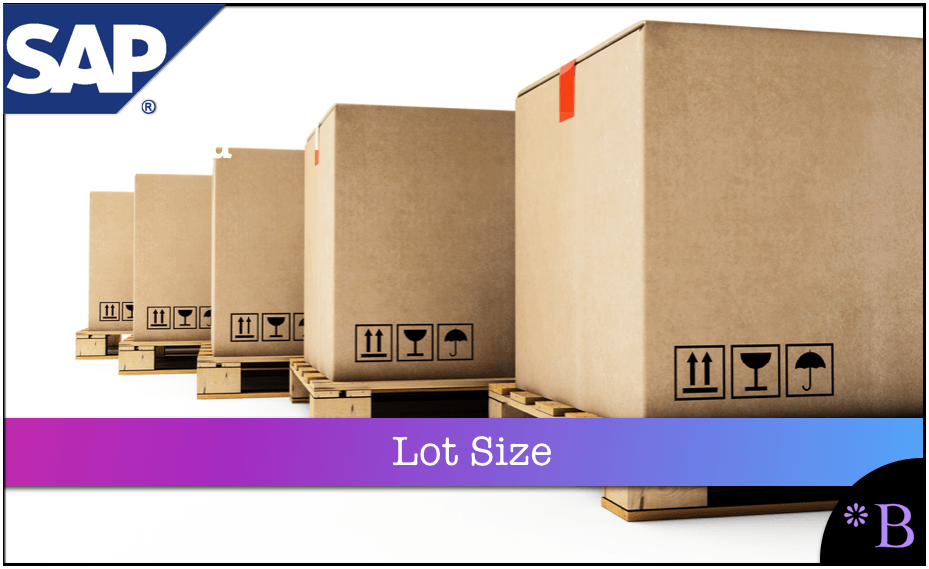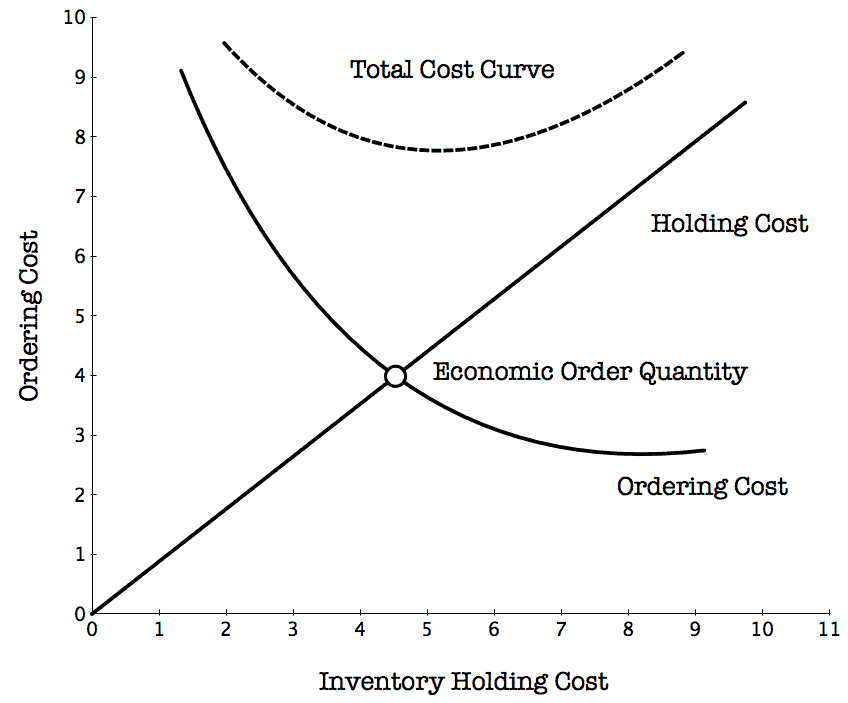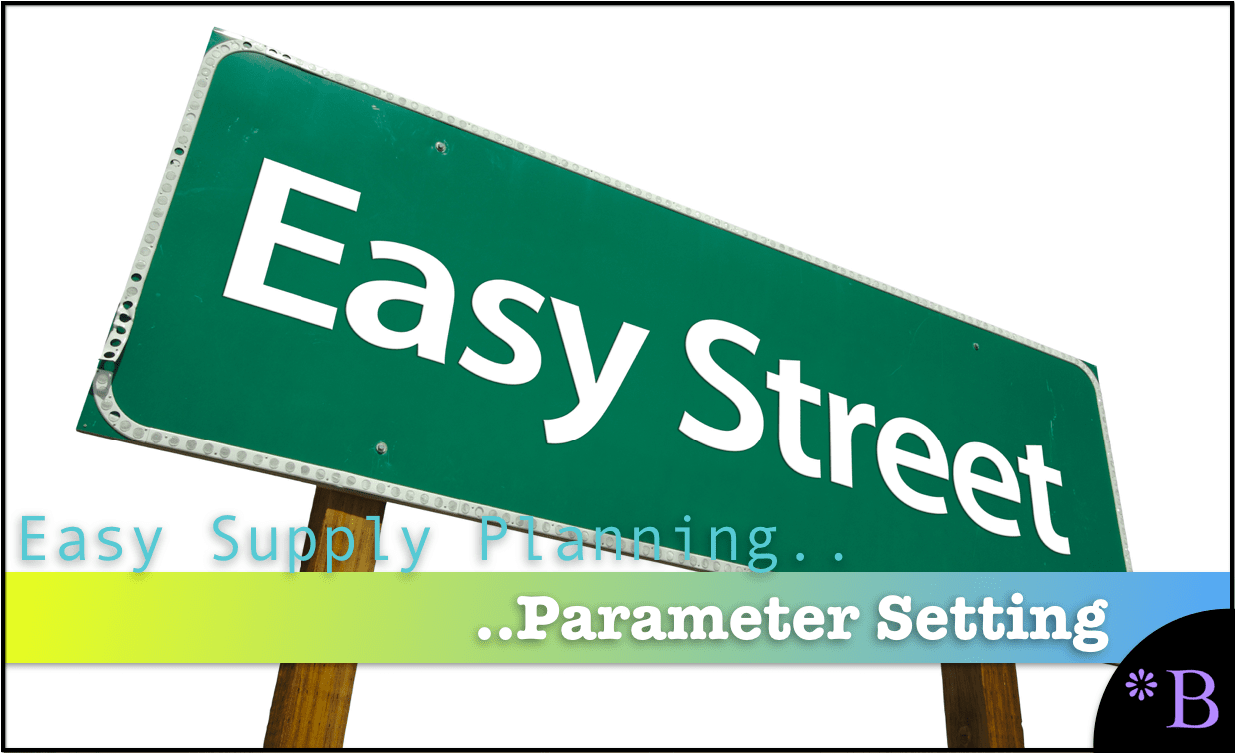How to Use the Lot Size Functionality in SAP APO
Executive Summary
- A lot size has a specific definition, and there are multiple approaches to setting the lot size.
- We cover where lot sizing is set in APO.

Notice of Lack of Financial Bias: We have no financial ties to SAP or any other entity mentioned in this article.
- This is published by a research entity, not some lowbrow entity that is part of the SAP ecosystem.
- Second, no one paid for this article to be written, and it is not pretending to inform you while being rigged to sell you software or consulting services. Unlike nearly every other article you will find from Google on this topic, it has had no input from any company's marketing or sales department. As you are reading this article, consider how rare this is. The vast majority of information on the Internet on SAP is provided by SAP, which is filled with false claims and sleazy consulting companies and SAP consultants who will tell any lie for personal benefit. Furthermore, SAP pays off all IT analysts -- who have the same concern for accuracy as SAP. Not one of these entities will disclose their pro-SAP financial bias to their readers.
What Are Lot Sizes?
The lot size is one of the most important concepts in supply chain management. While doing some research, I was looking for an online definition of lot size. I was disappointed in what I found, so I thought I would write a post on the topic.
Let us start with the definition I developed. As this site is dedicated to software, the definition will have a software orientation or bias. It applies to SAP APO but applies equally to any supply planning application.
“The lot size is the order batch quantity which is implemented in the system to control and conform production orders and purchase orders to the objectives of the company. The lot size prevents orders from being created in non-economic quantities, and serves to batch orders.”
At a high level, the lot size is a value that prevents the company from procuring or producing in quantities that would not be economical. However, there are a variety of ways of setting the lot size.
Finding a Good Definition in the Literature
It is often beneficial to check several definitions to get a full idea of a topic. Of the books I am familiar with, I like Marc Hoppe’s chapter on lot size in “Inventory Optimization with SAP,” this is one of the best explanations I could find.
Hoppe’s Explanation
Hoppe explains the lot size well as a trade-off between inventory management and production or between inventory management and procurement. I have a graphic below, which is a simple graphic for lot size. It demonstrates the relationship as two points of emphasis fighting against each other, with the best solution somewhere in the middle.

An economic order quantity formula can determine a lot size. This trades off the holding costs versus the ordering cost.
Understanding The Basic Concept of Lot Size: A Formula of Tradeoffs
Both production and procurement incur costs per purchase order or manufacturing order. Meanwhile, inventory management incurs holding costs for inventory, and of course, sales incur the cost of a lost sale if too little inventory is carried. Because many companies do not quantify lost sales, this cost tends to get overlooked.
However, it is a real cost, and efforts should be made to quantify its cost. This can be as simple as having order takers enter order requests that are made but cannot be fulfilled.
An additional cost that is often not considered is the transportation cost – inventory management cost trade-off.
As explained in the book “Managing the Supply Chain,” larger orders incur a smaller per unit shipping cost — generally.
What is Meant by the Term “Economic” on Lot Size
Generally speaking, when different costs are used to derive a lot size, the lot size is said to be “economic.” This is only one of many ways of determining lot size. Other methods include:
- ABC Guidelines (where A items may have 1-5 days of supply, while B items may have 20 days of supply – this method is strongly financially driven)
- Manual discretion
How Lot Sizes are Often Set in Reality
Optimally, and the industry is far away from optimality, the lot size – which is the order amount should be determined by the trade-offs between inventory holding costs and production and procurement costs. This is called economic lot sizes rather than deterministic lot sizes. Deterministic is a fancy operation research term meaning predictable or static.
Understanding Reality and the Lot Size
In fact, what happens is quite embarrassing, as executive compensation driven by short-term stock options promotes many companies to run with inventories that are too low, often justified by Lean consultants as a “best practice” or by various Lean initiates internal to the company. This article describes some of the problems with the application of Lean to supply planning.
A second reason economic lot sizes are not used is that they are more complex to implement than static lot sizes. While this discussion is outside of this article’s scope, it is important to note that the academic or strictly technical approach to inventory control is not applied to many companies.
How SAP APO Uses Lot Size
In SAP APO, as with other supply planning applications, the lot size approach has a tremendous impact on the plan’s results. It is one of the primary ways of creating economical order batches.
I have seen several occasions where an overemphasis on configuration and detailed planning has been placed into SCM. Only to have the output disaggregated by unnecessarily small lot sizes. It’s important to get the different parties on board with the lot size selected. Lot size discussions and meetings are intensely political, but they must be held.
Let us take just inventory management’s view into account to reduce argumentation (which I have seen done). This is not going to result in a happy and accepted SCM implementation. No matter how esoteric and compliant the SCM configuration, without cross-departmental agreement on the single lot size, implementations have a serious problem with buy-in.
Using Dynamic Lot Sizes
Because of the issues related to the paragraph above, dynamic lot sizes make a lot of sense. In fact, unless the project is quite limited in its budget, the only justification for fixed lot sizes I can see is for minimum order quantities (such as pallets) or supplier minimum quantities that are larger than the economic-based lead times would recommend. This condition is far more common in service parts, so dynamic lot sizes should be the rule for finished goods planning.
Economic Lot Sizes
The difference between commercial and dynamic lot sizes can be confusing. Both are desirable. Economic lot size means that the trade-offs between inventory and stockout costs and production and procurement costs have been calculated. Dynamic lot sizes only say that the lot size value is changed over time. It does not imply that the lot size was quantitatively determined with any consideration for economic order quantities. The ultimate desired state is to have lot sizes that are both dynamic and commercial.
One perfect example of the benefit of both commercial and dynamic lot sizes is in the event of price changes or a temporary discount. Without the ability to have commercial and dynamic lot sizes, companies either lose the capacity to take advantage of temporary discounts or rely upon their planners to increase the order quantities manually.
Lot Size in Cost Optimization
There is a particular way that the lot size can be adjusted in the SNP cost optimizer. Not wanting to make this article too long, I have included how this works in the link.
Lot Size in SAP ERP and SAP APO
Both SAP ERP and SAP APO have lot size fields. Since only critical materials should be planned in SAP APO, all other non-critical materials will go out on the lot size entered into the SAP ERP Material Master. For those items scheduled in SAP APO, the value entered in the Lot Size Unit field of the Product Master overrule any value entered in SAP ERP.
Here is the tab for lot size in the SAP APO Product Master

Lot for Lot Versus Versus Fixed Lot Size Versus Periodic Lot Sizing
SAP APO has several lot size options:
- Lot for Lot: Lot for Lot is probably one of the most misnamed methods in lot sizing. Lot of lot means nothing more than no lot sizing. That is, the order quantity sets the lot size. Why “no lot size” was not used as the default explanation rather than lot for lot, which sounds like some lot sizing is being performed, is unknown.
- Fixed Lot Size: Fixed Lot Size is used when the lot size calculation is determined outside of the system.
- Periodic Lot Size: this is when the lot size is set by period rather than by quantity. So if the demand averages 100 per month, and the Periodic Lot Size is selected, and then a month is used, then this translates into a lot size of 100 (roughly speaking)
Lot sizing is performed to prevent the system from ordering lot for lot. For this reason, lot for lot should be called “as per demand” or “non lot sizing” rather than lot for lot. Under lot for lot, if a customer demands 5 units, the ordering is placed for 5 units.
Lot of lot ordering is not economical because it orders in the quantities the item is demanded.
However, in addition to the Product Master, lot sizes can be set in the PPM.
Fixed lot size: The SNP optimizer considers the value you specified for the fixed lot size as the minimum lot size. Every time the PPM is executed, the PPM output quantity (the output component quantity) corresponds to this fixed lot size. – SAP Help Super Advanced Lot Sizing and SNC
Although the PPM is not a good place to maintain lot size information.
Transporation Lot Sizes in SNP
These lot sizes are applied only to transportation lanes. They serve to set a constraint upon the lane to make the loads that are built more realistic.
What is also important to discuss is how things like lot size, order batching or EOQ values are calculated and maintained.
How Should EOQ and Other Supply Planning Parameters be Calculated?
One would be able to, for example:
Item #1: Simulation
Set the supply planning parameters in a way that one can simulate the impact on the overall supply plan. When using supply planning systems, inventory parameters are typically managed on a "one by one" basis. This leads to individual planners entering values without considering how inventory parameters are set across the supply network.
Item #2: Interactivity of Changes
This is the ability to see the relationship between changes to service levels and the simulated output.
Item #3: Seeing Financial Implications
This is the ability to see the impact on the dollarized inventory for different aggregate settings.
Item #4: Mass Change for Efficient Maintenance
This allow the parameters to be changed en mass or as a mass change function. Both supply planning systems are designed to receive parameters; they are not designed to develop the parameters.
 Getting to a Better Parameter Setting Capability
Getting to a Better Parameter Setting Capability
We developed an approach where EOQ and reorder points are calculated externally, which allows for a higher degree of control. And for the average inventory to be coestimated in a way that provides an observable total system inventory, holding cost, service level, and a picture of what is happening to the overall system. Calculating individual parameters like EOQ without an appreciation for the systemwide does not make any sense. Also, in many, perhaps even most cases, there is no reason to use EOQ for the purposes given above. Instead, an alternative custom order batching method can be created to replace EOQ. There is nothing magical about EOQ. It is not a "best practice." It will not provide you with "digital transformation." It is not "Six Sigma." You will not get a "black belt" for using it.
After observing ineffective and non-comparative supply planning parameter setting at so many companies, we developed, in part, a purpose-built supply planning parameter calculation application called the Brightwork Explorer to meet these requirements.
Few companies will ever use our Brightwork Explorer or have us use it for them. However, the lessons from the approach followed in requirements development for supply planning parameter maintenance are important for anyone who wants to improve order batching and supply parameters.
Conclusion
Lot sizes are major master data elements to SAP SNP and supply planning and production planning systems. Within APO, the standard options of Lot for Lot, Fixed Lot Size, and Periodic Lot Size, along with variations for each, are available.
But the lot sizing functionality in SAP is the least interesting part about lot sizing. The interesting part is how to calculate the lot sizing that ends up being set in SAP.